Since this thread was supposed to be about the treasure and the hunt for said treasure, has died and come back, has been taken over by zealots and radicals and returned, I will refrain from opening another thread in the hopes it will just stay on topic. (I know, high hopes)
I have basically returned to this hunt after 7 years because I am at a point where all my other projects have been put on hold and I have to occupy my time. I seriously thought it would have been solved by now, but alas, I feel it has not. So I wanted to chime in with my thoughts as I have come up with them so far. Feed back welcome. Religion, demons, hate and unproven theories that it has been solved and I am wasting my time... are not. I will preface by saying I do not have a solve or a location, yet. As I am currently in England, I find it difficult to state for certain of either. When I get boots on the ground, that will change, of course.
Fenn has stated time and again that we should start at the beginning. He has repeated this over and over. What if (all of my statements will be a what if, btw) he is talking about the poem? He says you won't find it without the proper starting point, then goes on to remind us to start at the beginning. Has anyone thought how weird it is to have started the poem where he did? I refer you to Gilligan's Island... the theme song starts off "Sit right back and you'll hear a tale..." Shel Silverstein starts his poems "Listen to the musn'ts child, listen to the don'ts"... Fairy tales all start "Once upon a time..." or a narrator saying "Sit down and let me tell you a tale..." So, why then, is Fenn's starting phrase in Stanza 5?
Fenn says not to mess with his poem. This to me, means that we don't need to anagram anything, we don't need to find ciphers. Double meanings, word alliteration, etc, sure, but leave the poem itself, alone. However, If you start reading with Stanza 5 and continue around to end at stanza 4, it reads a whole lot better. When Fenn said that people had solved the first two clues but skipped over the other 7... how else does that make sense? Maybe all 9 clues were solved correctly but clues 1 and 2 from stanzas 5 and 6 came last? This would put them starting at a different spot, essentially skipping the last 7 clues, making only the first 2 correct.
My second observation was the way the first stanza read. I now firmly believe that you have to change the meter of your reading and put the emphasis on the correct syllables. Take the last two lines: I can keep my secret where, And hint at riches new and old. When I first started reading the poem I always kept asking myself "where?" you can keep your secret, where

? then, why start a new line with "and" that makes no sense grammatically, or literally. I first tried to solve this by once again rearranging the poem, trying to find matching rhyming lines that would make the "and" at the start of a line make sense as well as finish the sentence "where".
Then it dawned on me (meaning I was up all night)... In England they have the same words we do in the US they just say them differently. The only difference is where they put the emphasis. we say toe-MAY-toe they say toe-mah-TOE, we say Ah-LUME-eh-NUM they say AL-you-MINI-um. I then applied this logic to the poem. When I changed the emphasis "I can keep my secret, where" became "I can keep my (secret where)" as in a 2 word phrase with a single meaning, a place. my hiding spot, my secret where. It's as if he named the spot Secret Where.
Doing so allowed me then to read the poem and have that stanza make sense... I can keep my hiding spot, and hint at riches....
The next thing that bugged me was the two lines that don't rhyme: WWWH and NFBTFTW... halt and walk are not rhyming words. With the careful planning that went in to this, I couldn't imagine how he could not rhyme two words. If it was just the literal meaning he was after... it would be easy enough to say something like: Where warm water halts.... not far but too far to waltz. Therefore, halt and or walk has to be said for a reason. The obvious choice is WWWH, we focus so much on this line because of the connotations with the beginning that we seem to have. It says begin, so this is where we really begin... but I stopped that after a couple of days and focused instead on walk. If he wanted to indicate movement and rhyme with halt (to keep the possessive "waters" and singular "halt" intact, he could have easily said "vault" meaning to move ahead greatly, or with large strides, and it would still fit the "too far" clue.
But why walk? "Nowhere is too far to walk. if you have the time" - Steven Wright, Comedian.
This leads me to a cliff or overhang of some kind. You can look down to the next point, or clue and see it. It's just right there... but you can't walk to it. I also applied this to the meaning in a less literal sense... a trail end (he has said there are no man made trails near by). Maybe the man made trail ends here, and you have to keep going where it isn't advised, allowed, or frowned upon (not meaning trespassing, but more like the trail masters put up a sign saying no trail beyond this point, or something similar that I have seen all over the country). Or, perhaps his frustration hint in one of his interviews where he said "I wish someone would just take a bike and go in there and get it" means the walking trail ends and the bike trail begins. I know when camping as a kid I rode on a ton of natural made bike trails... they were just there, you had to get off your bike to clear brush and limbs, etc.
I have more to decode and work on, but I will leave it as is for now. I seem to have a penchant for lengthy posts. I'll try to keep this in sizeable chunks for now.
I still think everyone is reading the poem wrong, we need to start there if we ever plan to solve it correctly.
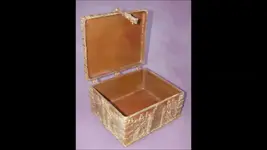
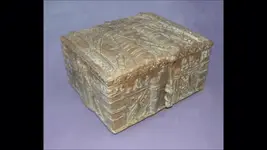
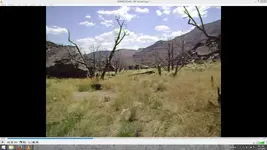
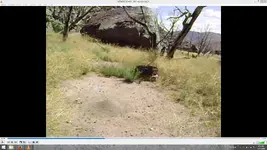
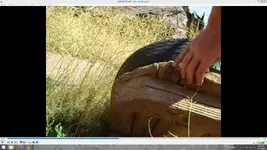

 ? then, why start a new line with "and" that makes no sense grammatically, or literally. I first tried to solve this by once again rearranging the poem, trying to find matching rhyming lines that would make the "and" at the start of a line make sense as well as finish the sentence "where".
? then, why start a new line with "and" that makes no sense grammatically, or literally. I first tried to solve this by once again rearranging the poem, trying to find matching rhyming lines that would make the "and" at the start of a line make sense as well as finish the sentence "where".
